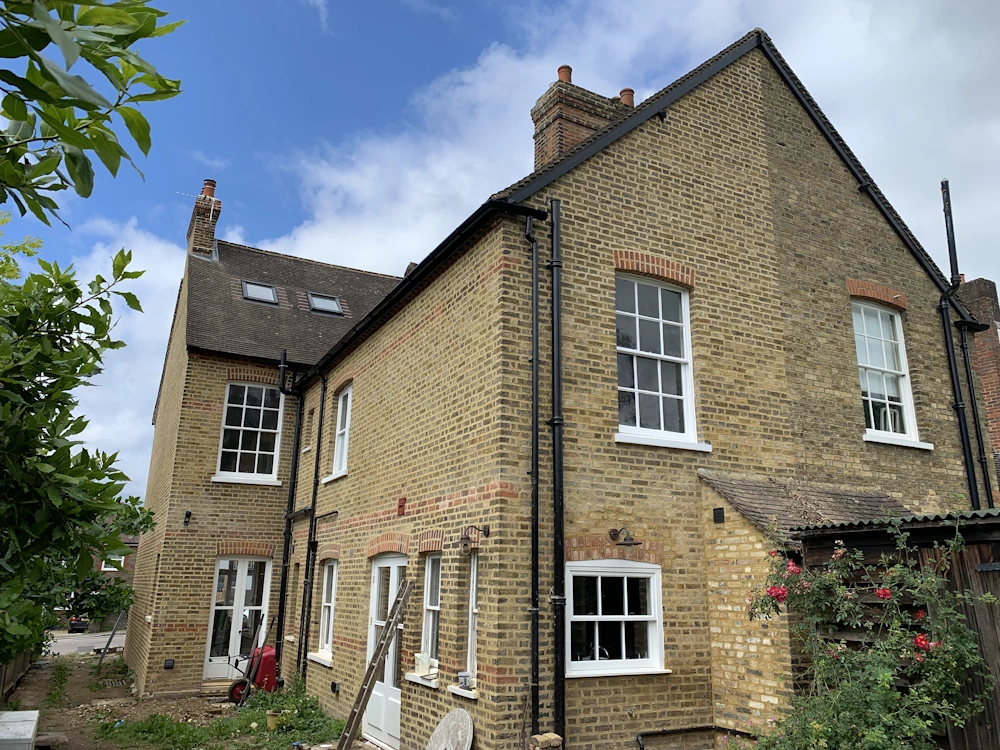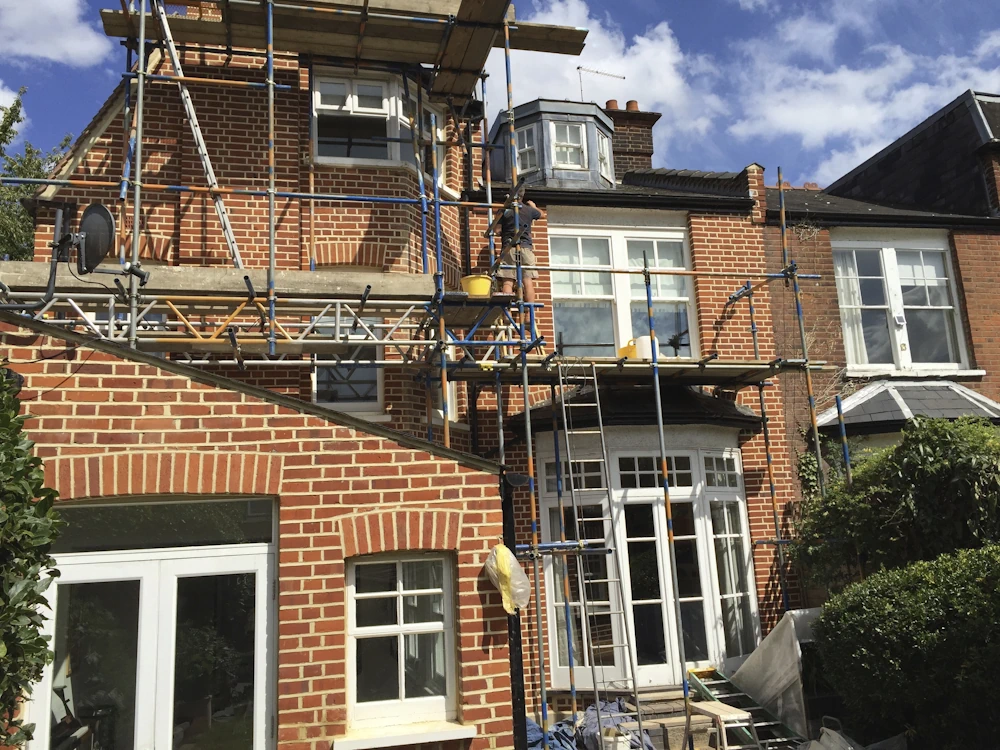
Lime Mortar Repointing in London
Lime mortar repointing is the process of renewing the pointing–the lining between bricks or stone–of a building. This method can improve the waterproofing, structural stability, and appearance of brick or stone walls. It is essential that this procedure is conducted properly to ensure the steadfastness of your home or building.
A frequent mistake is to remove and replace lime mortar with cement mortar. When this is done, due to the lower absorption rate of cement mortar, water does not escape the stones as effectively. This can lead to damp issues, with observable chipping of bricks and stones.
Return the historical integrity and strength to your London property with the specialized services of MMR Pointing London in lime mortar repointing. Lime mortar is a highly breathable and compatible historic building material, needing proper handling to bring restoration and last a long period. Every project is evaluated by our skilled craftsmen, by carefully taking out decayed mortar, and replacing it with good-quality lime mortar mix suitable for the building. From period properties and conservation projects to the eclectic architectural landscape of London, trust us to breathe life into your brickwork without losing authenticity and strength.
Book Your Free Survey & Quotation
Lime Mortar Repointing Experts
Lime Mortar Repointing Services in London
MMR Pointing London provides lime mortar re-pointing services with a guarantee, meeting the highest needs of historic and heritage properties in London. Our experienced team understands the complexities of lime mortar to ensure it meets the requirements of historical authenticity and building code conservation and restoration.
Lime Mortar Repointing
Additionally, lime mortar is a flexible material. It can withstand movements in a property that may occur over time, which is expected with older buildings. These movements can create fine cracks or splits in the mortar. When this happens, the lime mortar has a self protecting quality. As the lime takes in moisture and CO2, it begins to form calcite crystals which seal and protect the crack from further damage. Cement mortar does not have this quality, and as older constructs naturally shift, it just begins to wear, crack and fall away. For these reasons, cement mortar should never be used in place of lime mortar under any circumstances, and is often considered the fault of damage, particularly with damp, in older buildings.

Whether that be a delicate repointing to listed buildings or enhancing the charm of period properties, the expertise in lime mortar shines through each project and delivers works that stand against the test of time. Specialized skills to repair the mortar joints in such a way that the structural stability and historical value of buildings are ensured, are usually required mainly in cosmopolitan cities such as London. While modern cement mortar is rigid, lime mortar is both breathable and flexible, making it best for the building of far older and more delicate structures that might have movement and moisture issues. Based in London, MMR Pointing Lime Mortar Repointing ensures your property compatibility, durability, and aesthetic continuity, and all offer protection from the elements for generations. Trust our expertise to breathe new life into your historic building with meticulous lime mortar repointing solutions.
Lime Mortar Repointing FAQ
Lime repointing is, rather, the method of taking out decayed mortar from the joints and replacing it with lime-based mixes instead of modern cement mortars. The preference for lime repointing occurs from its compatibility with the older materials of masonry, breathability, and the ability to allow a building to move structurally without causing damage.
As for exterior mortar, the lime mortar might require repointing between 25 to 50 years. The actual period strongly depends on the existing mortar conditions, the exterior weather elements, and the building age. Generally, the period ranges between 50 and 100 years for historical and period buildings that require repointing, but ideally, this is by subjective professional assessment for accurate timelines.
